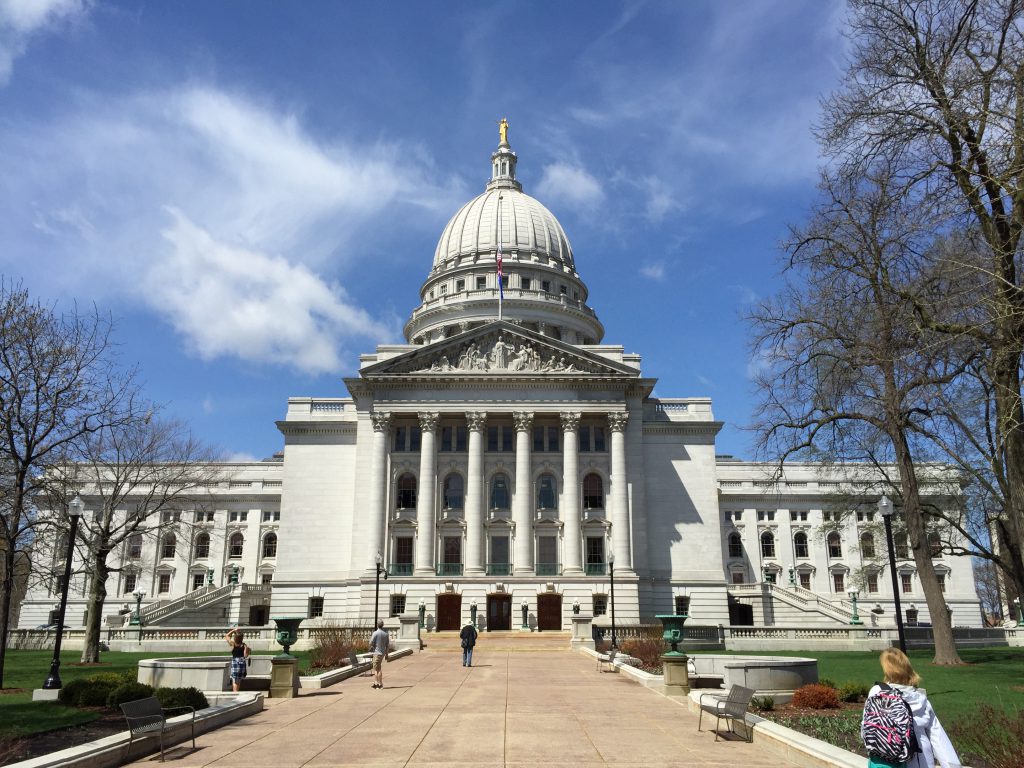Wisconsin Invented Unemployment Insurance
Jobless benefits began in 1932 with $15 check. Program now crucial during pandemic.
The unemployment insurance (UI) system that has been a lifeline this year for 22 million out-of-work Americans because of the COVID-19 pandemic began in Wisconsin in 1932. It was an outgrowth of the “Wisconsin Idea”, of using academic research to solve social problems. The first UI check – for $15 – went to a Wisconsin engraving company worker who lost his job in the Great Depression, as a story on that history by the Washington Post reported in April.
In September 1932, economist E.E. Muntz explained that Wisconsin’s pioneering UI system was revolutionary, because it shattered the myth that anyone who wanted to work could find a job.
Partly because of the success of Wisconsin’s program, a national UI system was folded into the Social Security Act that was signed into law on Aug. 14, 1935 — 85 years ago. States can set their own benefit levels, but states must follow federal rules. Employers pay into each state’s UI system based on pay and layoff records .
Fast-forward to mid-March of this year, when COVID-19 forced a national economic lockdown that by one indicator — unemployment — was worse than the Great Depression.
To survive, about 800,000 Wisconsin workers filed for UI benefits — 10 times the number for the same period in 2019.
Although the avalanche of claims swamped outdated state Department of Workforce Development computers, and some who filed for benefits are still waiting for them, most got the state maximum benefit of $370 per week.
In his budget proposal last year, Democratic Gov. Tony Evers asked that the $370 maximum benefit — unchanged since 2009 — be increased to $406. But Republicans who control the Legislature wouldn’t didn’t consider any increase.
Since 2000, Wisconsin’s maximum weekly benefit has gone from $300 to $370. But, had it kept up with inflation, that weekly benefit would be $460.50, said Laura Dresser, an economist who is associate director of the Center on Wisconsin Strategy. The Center just published its 2020 “State of Working Wisconsin” report.
Most Wisconsin residents who qualified for the maximum state benefit also got $600 more a week — a COVID-19 economic stabilization stipend approved by Congress and President Trump.
The $970 in UI benefits “made an enormous difference in people’s lives,” Dresser said. “The workers most impacted by the economic shut-down in March were workers in leisure and hospitality – workers who earned low wages, which make it nearly impossible to save enough money for a crisis like this.”
“Further, these workers rarely had paid leave (though the CARES Act helped with that through 2020), and rarely had health insurance from work,” she added. “For many of these workers, the extra benefits were a lifeline, allowing them to pay rent, keep the utilities on, keep food on the table. Given the sustained high unemployment rates, not all workers can find jobs.”
Evers last week told reporters fine-print details of Trump’s proposal have “changed a lot” since it was announced. A better solution would be Congress and the President agreeing on a new aid package that makes sure “people get money they need to survive,” Evers added.
Dresser also said Wisconsin families need help beyond the state’s $370 weekly UI benefit. “Right now, 8.5 percent of the state’s workers are unemployed,” Dresser said. “Their situation is likely the most desperate. They need some source of income to stay in homes, until the economy recovers enough to extend opportunity.”
She added: “The luxury during the pandemic is to get to work at home. You’ve got a paycheck and safety – maybe 30 percent of workers [nationally]…. But if you’ve got children in school or before school, working at home has incredible stress as well.”
What would that first $15 UI check have bought in 1932? Back then, gas cost 10 cents per gallon, the average home rented for $26 per month, and a loaf of bread cost 9 cents.
Steven Walters is a senior producer for the nonprofit public affairs channel WisconsinEye. Contact him at stevenscotwalters@gmail.com
If you think stories like this are important, become a member of Urban Milwaukee and help support real, independent journalism. Plus you get some cool added benefits.
The State of Politics
-
RNC Brings Fame to Gen Z Party Leader
 Jul 15th, 2024 by Steven Walters
Jul 15th, 2024 by Steven Walters
-
Wisconsin’s Republican Roots Run Deep
 Jul 8th, 2024 by Steven Walters
Jul 8th, 2024 by Steven Walters
-
Feuding Supreme Court Justices Need a Break
 Jul 1st, 2024 by Steven Walters
Jul 1st, 2024 by Steven Walters





















